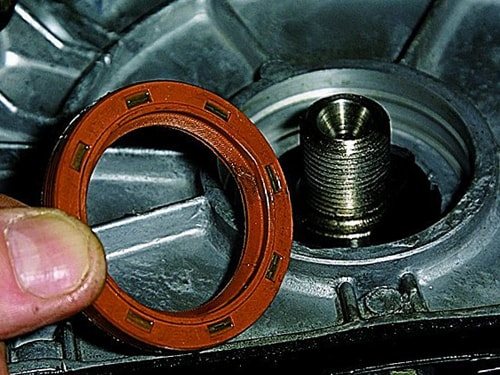
Symptoms of a Failed or Failed Ball Joint (Front)
Content
Common signs include clunking and excessive vibration at the front, and you may inadvertently start turning right or left.
Ball joints are an important suspension component in almost all modern cars. They are a spherical bearing in a socket, functioning similarly to the ball and socket design of the human thigh, and serve as one of the main pivot points of the suspension connecting the vehicle's control arms to the steering knuckles. The front ball joints allow the front wheels and suspension to move forward and backward as well as up and down as the steering wheel is turned and the vehicle travels down the road.
In the event of a ball joint failure, the wheel is free to move in any direction, which can damage the car's fender, tire, and several suspension components, if not more. Usually, when the front ball joints begin to fail, the vehicle will show several symptoms that alert the driver to a problem.
1. Knock in the front suspension
One of the most common symptoms of a suspension ball joint problem is a clanging sound coming from the car's front suspension. As the ball joints wear, they loosen in the seat and rattle and rattle as the suspension moves up and down the road. Worn ball joints can rattle or clank when driving over rough roads, speed bumps, or when cornering. The knocking usually gets louder as the ball joints wear out, or until they eventually fail completely and break.
2. Excessive vibration from the front of the vehicle.
Another sign of problems with ball joints is excessive vibration coming from the car's suspension. Worn ball joints will hang in their sockets and vibrate disproportionately while the vehicle is moving. The vibration usually comes from the affected ball joint on the right or left side of the vehicle. In some cases, vibration can also be felt through the steering wheel.
3. Uneven front tire wear.
If you notice that the inner or outer edges of your front tires are wearing faster than the rest of the tread, the probable cause is worn ball joints. This symptom may be difficult to catch; If you notice any other signs of ball joint failure, check the tires carefully and pay particular attention to the inside of the tread. Wear should show on either the inner or outer tread, not both, indicating wear on the front ball joints. Insufficient tire pressure will cause both edges to wear faster.
4. Steering wheel tilts left or right
Another sign of bad ball joints is wandering steering. Wandering steering is when the vehicle's steering shifts spontaneously from left to right. When the ball joints are in good condition and the wheels are in the correct position, the steering wheel should stay mostly straight and straight in response. Worn ball joints cause the vehicle's steering wheel to lean to the left or right, requiring the driver to compensate for the problem.
Because ball joints are an important suspension component of any car. When they start to have problems or fail, the overall handling and ride quality of the car is likely to deteriorate. If you suspect your vehicle's ball joints are badly worn or in need of replacement, have a professional vehicle suspension inspection technician determine the best course of action. If necessary, they will be able to replace faulty ball joints for you.

